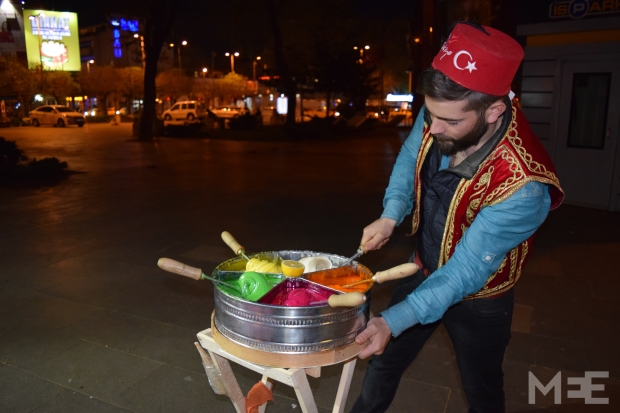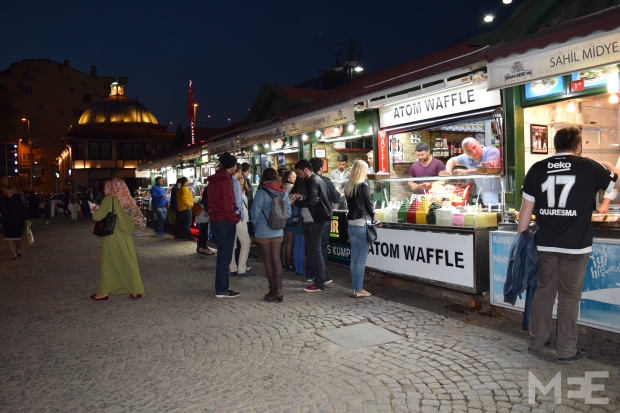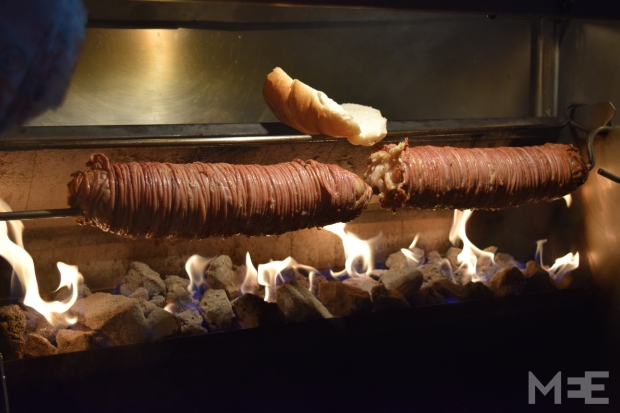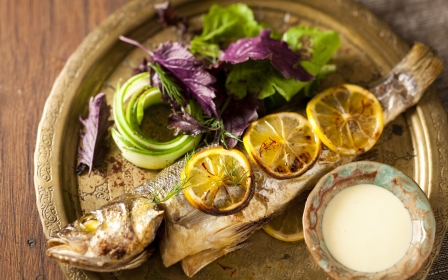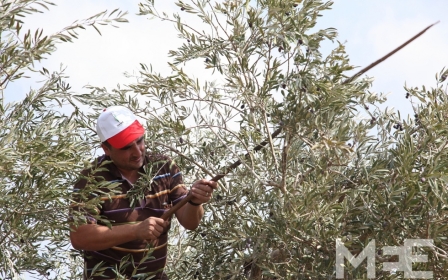Istanbul’s street food culture reflects the city’s soul
ISTANBUL, Turkey – As Ahmet Dilen scoops stuffed mussels out of their shells, sprinkles a dash of lemon juice on them and hands them out to patrons gathered around his cart while the sun sets on this ancient city, he is not only providing a treat to his customers but also nourishing the very soul and essence of this megapolis.
Any mention of Turkish cuisine is likely to bring to mind the kebab or the doner kebab in particular. Quite rightly too, since it has become one of Turkey’s greatest cultural exports. A doner shop can be found in almost every neighbourhood in the country as well as most places across the globe.
Yet it is Istanbul’s lesser-known street food that wins the hearts, minds and stomachs of both residents and visitors alike. The sheer variety harks back to a past where multicultural coexistence was the norm, and when the first bridge of friendship was often a culinary one. Istanbul’s street food has always played a dual role: it plays a vital part in sustaining the city’s less well-off inhabitants, while also injecting variety and vibrancy into the city itself.
The bouquet of distinctive scents of potatoes baking, meat being grilled, toffee coming to a boil, and a whole host of other smells serve to remind Istanbul dwellers and visitors to this city of its rich culinary heritage, while also tempting people into indulging on that extra snack.
The aroma of various foodstuff being prepared as the day draws to a close often creates a harmonious compliment to the city's sights.
Throughout history, people from all over the Ottoman empire flocked to the former imperial capital Istanbul, either in search of shelter or fortune. It was the flavours of home that provided many of them with both comfort and the chance to earn an income.
Istanbul’s street food scene draws from all ethnicities and religions whether it be the stuffed mussels (midye dolma) from the Armenians; grilled sheep intestines (kokorec) from the Greeks; baked potato stuffed with various fillings (kumpir) from the Balkans; deep fried dough in syrup (lokma) from the Middle East; or the vibrantly coloured soft toffee paste (macun) from central Anatolia to name but a few.
Even to this day, stories from some of the street food vendors mirror those of their colleagues from centuries ago. Dilen, the stuffed mussel vendor, is a Kurd from Mardin. Around 90 percent of all stuffed mussel vendors in Istanbul are Kurds from the landlocked southern province of Mardin, which borders Iraq and Syria.
They fled the region's fighting in the 1990s and sought to continue their lives in Istanbul. The preparation and sale of stuffed mussels provides work for entire families and allows them to earn a living.
“Midye dolma is a specialty of Armenians from the port city of Izmir. In the 1970s a Kurd from Mardin worked alongside an Armenian and learned the recipe. When we had to move westward and were forced to leave our lives and livelihoods behind, the recipe was passed out amongst us and now you see it is mostly us Mardin Kurds selling midye dolma,” says Dilen.
“My mother and sisters prepare the midye dolma at home during the day and I come here to sell it in the evenings,” he adds.
The midye dolma has also always been a staple of the Greek and Armenian meyhane (taverna) scene.
“Delicious! What a great combination of mild spices and tanginess,” says Ahmed, 25, a visitor from Kuwait, who tries midye dolma for the first time.
Ahmed, previously unaware of Istanbul’s street food culture, is delighting in the flavours and aromas of the city as he takes in the sights and sounds. Although he has not yet summoned up the courage to try the grilled sheep intestines.
“I have seen those things on horizontal spits but haven’t tried it since I couldn’t figure out what it is. I have tried the kumpir (baked potato with stuffing) though and it is also great,” he says.
Kokorec and kumpir
While kokorec (a sandwich of grilled sheep intestines with chopped tomato, thyme and red pepper flakes) might not appeal to the squeamish at first, those who try it inevitably become avowed fans of the dish. The origins of kokorec are Greek and it is still prepared on major religious holidays in Greece. In Istanbul though, it is prepared all year round and is a very popular street food.
The humble potato is transformed into a veritable feast with kumpir. A large baked potato is stuffed with all kinds of fillings imaginable, from grated cheese to corn, to hot dogs, yoghurt and pickles.
The name has Balkan origins. It is derived from krompir, which simply means potato in many of the languages used in countries that comprise the former Yugoslavia.
The people that make up Istanbul’s street food scene today are not necessarily of the same background as the origin of the product they are selling.
Ismail Sacak, for instance, is of Tatar descent and was one of the first to set up his kumpir stall 30 years ago in Istanbul’s Ortakoy neighbourhood, famous for its rows of kumpir stalls.
He takes a wider view and says the kumpir might have come to Turkey from the Balkans, but the potato is originally from America and hence he says his product is from there.
“There are 140 varieties of potato and you can do so much with them. For me the origins, who makes them now, and all that doesn’t really matter so much. What matters is keeping customers happy with a good product,” says Sacak.
In Sacak’s view, street food, whether it be kumpir or other products, needs to be able to adapt to changing times and tastes.
“My potato is the same but the toppings have changed. These days people demand different toppings, and sometimes healthier toppings. If you told me 15 years ago that customers would request tuna fish toppings or char-grilled aubergine toppings, I would tell you that you are mad,” he says.
Fine dining fails to steal spotlight from street food
Increased prosperity over the past decade has seen an astronomical rise in fine dining restaurants and an explosion in the types of fusion cuisine available, but Istanbul’s humble street food continues to hold a place of pride in the hearts of both the rich and poor, and locals and visitors.
High-end chef Ayvaz Akbacak can attest to the strong pull and popularity of street food even among the rich and famous.
“In the menu that I am creating for my new restaurant, one of my starters is an Italian-style Bruschetta with a kokorec topping. My customers enjoy the taste of Istanbul’s street food and I have to come up with ways to integrate them in my creations,” says Akbacak.
Akbacak, however, believes that Istanbul’s street food culture is not actually that old and is a more recent phenomenon.
“In Ottoman times, street food wasn’t a big thing. It is recently that it has become such a craze and old recipes and things are being rediscovered. Look at what is most widespread now. All these stands selling frankfurter-type hot dogs. Hot dogs are German, not Turkish and it is a very recent thing,” he says.
Despite the immense popularity of street food here, Akbacak warns of hygiene standards and nutritional values.
“You have these hot dogs and mini burgers boiling away all day long in the heat, cold or any kind of weather. I don’t think that is such a great eating option,” he says.
The very same hot dogs and mini burgers, which are prepared in special buns fried in a tomato sauce, remain hugely popular among the city’s residents, particularly among late night revellers looking for a bite to eat.
The only option for chefs like Akbacak is to somehow incorporate street food into their fine dining menus because even the wealthy now demand it and are in awe of its flavours.
“Not so long ago the simit was something for students and low-level civil servants. Now look at its popularity. People can’t get enough of it,” says Akbacak. “We have to find ways to serve it with haute cuisine.”
The simit is a much-loved type of ring-shaped bread, which is baked after being dipped in a molasses-like syrup made from grapes and covered with sesame seeds. It is an inexpensive and filling snack available at practically every major street intersection around the country.
Regardless of gripes about nutritional values, hygienic storage conditions and other issues, Istanbul’s street food inevitably reflects the very soul and essence of this ancient city, its multiple civilisations and the variety of the cultural backgrounds of its residents.
From sweet to savoury, or from salty to spicy, Istanbul’s street food scene has something to suit everyone’s palate.
New MEE newsletter: Jerusalem Dispatch
Sign up to get the latest insights and analysis on Israel-Palestine, alongside Turkey Unpacked and other MEE newsletters
Middle East Eye delivers independent and unrivalled coverage and analysis of the Middle East, North Africa and beyond. To learn more about republishing this content and the associated fees, please fill out this form. More about MEE can be found here.



